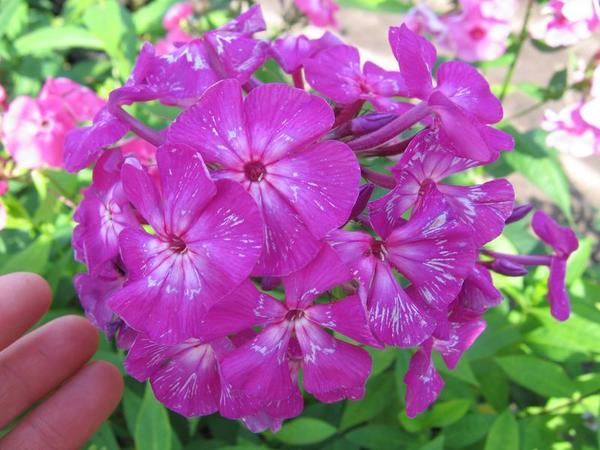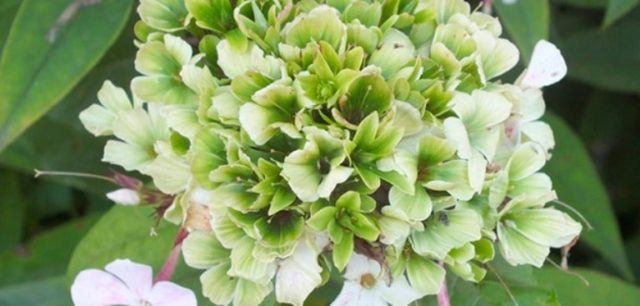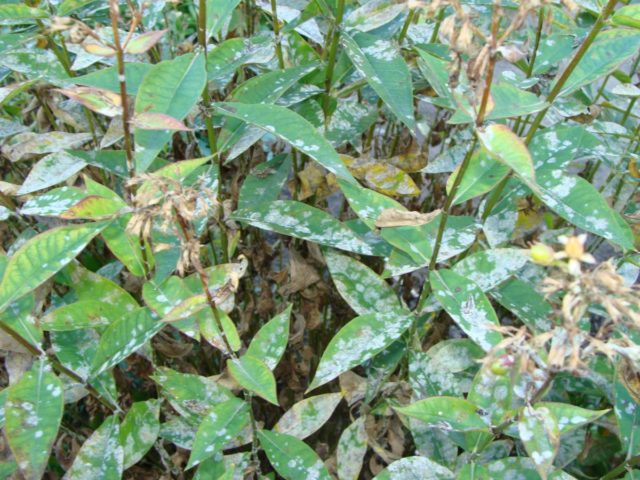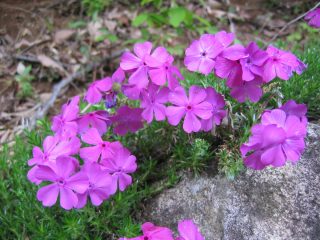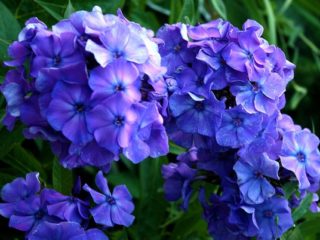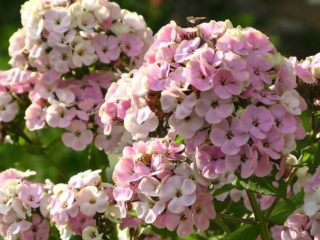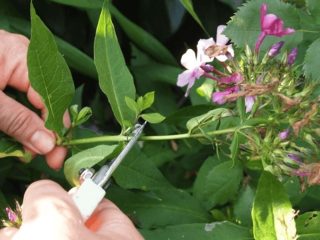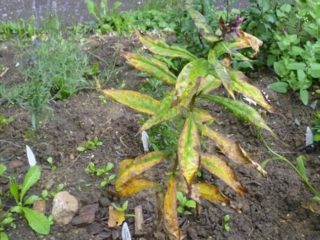Content
Phlox Gzhel belongs to one of the best crops for decorating summer cottages and gardens. The variety has a delightful aroma, high resistance to cold and frost, undemanding care and long flowering. Before planting a plant in the garden, it is important to carefully study all the features of the content in order to provide the most comfortable conditions for growth and development.
Description of phlox Gzhel
For the Phlox Gzhel variety, a pleasant aroma is characteristic, which resembles the smell of oriental spices. The bush grows from 1 m in height and up to 70 cm in diameter. A plant with a branched root system located in the upper soil layer.
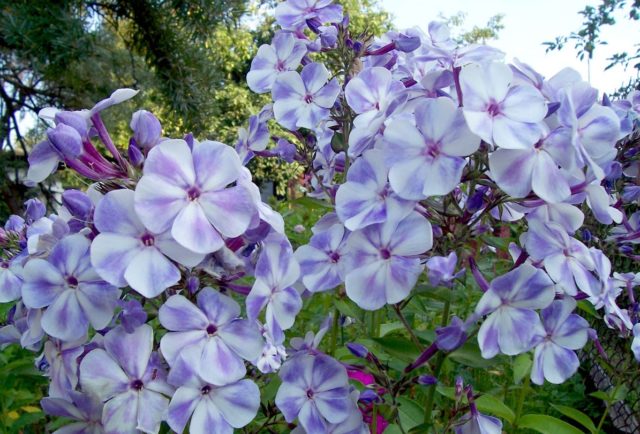
On the sophisticated, but rather strong stems, there are dark green oval-shaped leaves, slightly pointed at the end
This variety of phlox is characterized by low susceptibility to disease and pests, and also has a high level of winter hardiness. The plant tolerates well even the most severe winters with severe frosts. Gzhel can be grown in all regions.
Phlox Gzhel have an interesting feature: the color and flowers directly depend on the weather. So, on a cloudy day, the color of the petals becomes more saturated, and in hot weather it will take on a purple hue. The time of day also affects the appearance of the plant: in the evening, the flowers become slightly brighter. Phlox variety Gzhel is excellent for creating bouquets due to its ability to maintain a fresh look and rich color for a long time.
Description of phlox Gzhel Maxi
In 2012, breeders managed to bring out an analogue of the variety - Phlox Gzhel Maxi, which has several external differences.
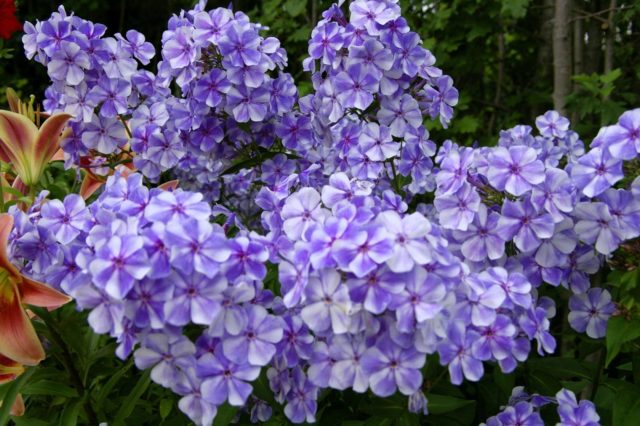
The bush of the Gzhel Maxi variety is slightly lower and reaches 75 cm in height
At the same time, during the budding period, large flowers appear on round-shaped inflorescences, reaching 5 cm in diameter. The variety has the same high level of frost resistance and disease resistance as its predecessor.
Flowering features
Phlox Gzhel is a perennial crop with an average flowering period. The shrub begins to bloom in mid-summer, and this process lasts until the last days of September. In July, blue buds appear on phlox Gzhel. When blooming, they form dense cone-shaped inflorescences.

Flowers with purple, white and blue petals reach 4-4.5 cm in diameter
The flowering of phlox Gzhel can be completely continuous from spring to autumn. To do this, use different options for combining species, combining them not only in color, but also in duration and flowering period.
Application in design
Phlox Gzhel is perfect for decorating a "village garden". Bells, carnations, chamomile, rudbeckia can be planted next to the crop. Decorating a classic garden, phlox Gzhel can be combined with different types of perennials: peonies, daylilies, etc. Do not forget that the plant requires a spacious area for normal growth and development. Therefore, you should refrain from planting Gzhel phlox near growing species.

The plant looks unusual among other shrubs and trees, along the edge of fences
The flower is often used to decorate paths, alleys, building facades. Some gardeners grow phlox specifically for cutting. For more lush and large flower caps, only 6-7 peduncles need to be left on one copy.
Reproduction methods
There are several ways to reproduce phlox Gzhel.These include dividing the bush in the spring and autumn, cuttings. The seed method is possible, but it does not allow you to preserve the variety of the crop.
The most effective and popular method is reproduction by dividing the bush, which is often carried out in the spring or early autumn. Summer planting is also allowed, but then it is recommended to cut the peduncles. The mother plant must be carefully dug up, the sprouts must be cleaned of clods of earth, but the root ball must be left intact. Then, carefully disassembling the roots, the bush is divided into several parts.
Landing rules
Phlox Gzhel grows well and develops on fertile loamy loose soil, slightly acidic or close to neutral. In the form of fertilizer, it is recommended to use rotted manure and ash. Top dressing should be applied 20-30 cm deep into the root area.
It is necessary to plant phlox Gzhel in a clarified area, but without the sun. The transplant is carried out in the spring, at the beginning of May or in the fall, until the end of September. It is important not to delay this procedure so that the plant can take root. The duration of growth in one area can be from 7 to 10 years.
Blooming phlox Gzhel can also be transplanted. Then he should ensure regular watering, and cut the flowers.
For transplanting, it is necessary to dig a hole up to 20 cm deep (the size of the hole may vary depending on the size of the roots) and shed abundantly with water. The bottom of the recess should be sprinkled with humus, ash, superphosphate. The clay soil is also filled with sand to loosen it, and loam is added to the sandy soil to prevent the plant from drying out.
To transplant a plant, its roots must be placed in a hole and spread, and the space between them must be filled with earth. It is important to monitor the root collar so that it is located 3-5 cm above the soil level. If it is higher, the plant may die from hypothermia, and if it is lower, it may not bloom. After planting is complete, regular watering must be ensured.
Follow-up care
Phlox Gzhel loves fertilizers, which must be applied about 6 times a season.
In spring, when the snow has melted, to improve growth, it is recommended to apply top dressing with a high nitrogen content or water it with slurry from manure, mulching the soil around the phlox with humus.
During budding, the amount of nitrogen fertilizer should be reduced. During this period, it is better to use complex flower potassium-phosphorus dressings and ash. It is dissolved in irrigation water (1 tbsp. L. Per bucket) or poured at the base as mulch. Due to the high content of potassium in fertilizers, the flowers will become brighter, and the budding time of the bush will slightly increase.
For the fourth time, phosphorus substances are used in liquid form or superphosphate granules (10-15 g) are placed in the soil.
When the flowering is over, phosphorus-potassium fertilizers are again used for feeding. Superphosphate has a low solubility in water, so complex fertilizer in liquid form or granules in the soil would be the best option.
Watering phlox is best done in the evening or morning, with a consumption of 15 liters of water (about 2 buckets) per 1 m2 of planting area. Do not water the leaves, especially in hot weather. It is enough to run water at the base of the plant or put a hose between the bushes.
After watering or heavy rain, it is necessary to loosen the soil (once every 2-3 weeks). This must be done carefully, given the surface type of phlox root system.
Preparing for winter
To prepare the plant for the onset of winter, a small pruning should be done in mid-October: remove the old stems 8-10 cm in height. The bush does not need them in winter, besides, it is these parts that can become a breeding ground for pests and fungal diseases in the next year. If you carry out autumn work on time, you can significantly save time in spring for pruning dead wood.
Due to its winter hardiness, Gzhel phloxes tolerate a drop in temperature well, therefore they do not need shelter. However, at the end of flowering, it is important to cut off the wilted inflorescences so that they do not weaken the bush before wintering.
Pests and diseases
The main cause of Gzhel phlox diseases is improper conditions of detention or the planting of sick specimens. Gardeners recommend organizing a "quarantine bed" on the territory. New specimens are planted on this site. And only after the expiration of time, the plant is placed in a permanent place. In addition, it is necessary to carefully process the used garden tools and containers with such standard products as steam, alcohol and boiling water.
The most common diseases of phlox Gzhel include:
- Variegated, which often occurs during the flowering period. As a result, the plant takes on a weakened appearance and fades. Affected specimens must be immediately dug up and burned, and the planting site must be carefully processed.
The disease can be recognized by the following signs: a change in the color of the petals, the appearance of asymmetrical radial light stripes on them
- Jaundice... The disease leads to a change in the shape of the leaves, buds and stems. The disease spreads through the plant rather slowly, however, if symptoms are found, it is necessary to completely destroy the affected specimens.
The flowers begin to turn green, the growth of the bush stops
- Powdery mildew... If the problem is not detected in time, the bushes may die. To prevent the disease, a solution of furacilin or any fungicide should be used. If powdery mildew begins to spread, phloxes should be treated with preparations containing copper.
The disease is characterized by the appearance of white bloom and dull color of the leaves.
The most common crop pests are slugs, aphids, as well as spider mites, which infect already weak, fading bushes. To preserve the plant, phlox should be additionally treated with chemical agents against pests, which can be found in any garden store.
Conclusion
Phlox Gzhel is one of the most popular varieties for decorating garden areas. The bush has unique decorative qualities, has an excellent aroma and is able to change color, depending on weather conditions. Phlox paniculata Gzhel is unpretentious in care, characterized by a high level of winter hardiness and is able to grow in one place from 7 to 10 years. In addition to proper keeping conditions, it is important for the plant to provide regular treatment with special preparations in order to prevent damage from diseases or pests.
